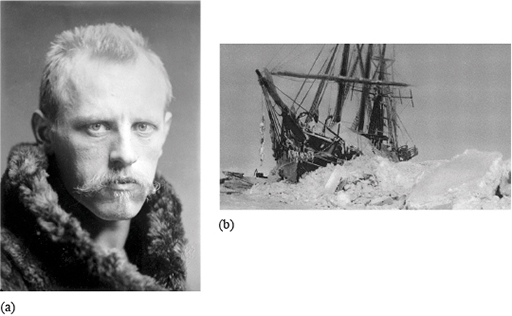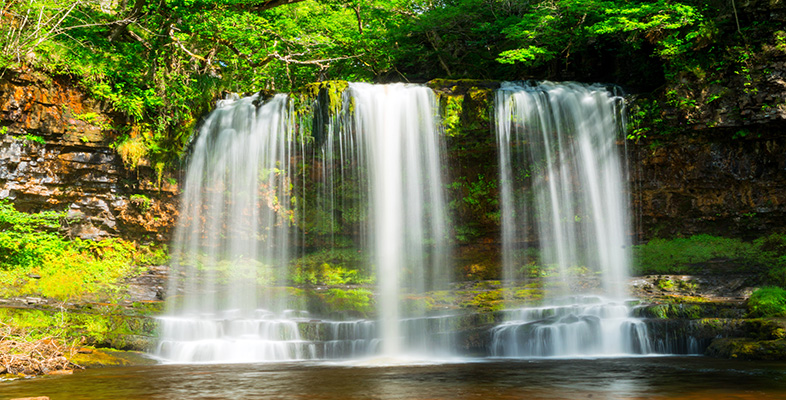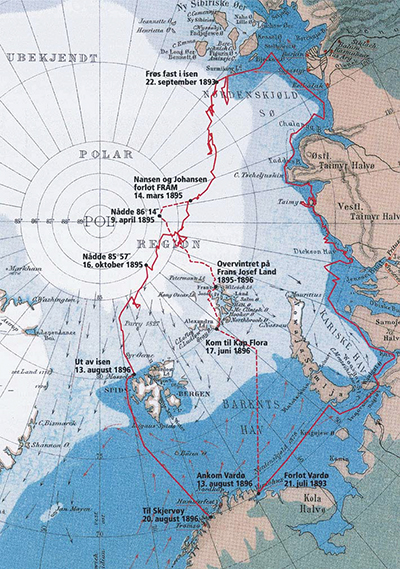2.3.1 Nansen and the voyage of the Fram
Wood on the shores of Svalbard and East Greenland caused confusion to the first explorers. But when wreckage from a ship called the Jeanette was found on the coast of East Greenland in the late 19th century, the best environmental scientist of the age, the Norwegian Fridtjof Nansen (Figure 7(a)), had a eureka moment. Nansen knew that the Jeanette had sunk off Alaska on the other side of the Arctic Ocean and deduced that the wreckage must have been carried across the frozen sea by the sea ice. He decided to try to use the ice drift to reach the North Pole and study the Arctic environment on the journey. He had the ship Fram (Norwegian for ‘forward’) built (Figure 7(b)). The ship had a round hull so that it would not get crushed like the Jeanette, and Nansen left Norway in 1893 for the Arctic and the North Pole. It was over three years before he and his colleagues returned.

Nansen and his crew followed the Russian coast (i.e. against the ocean currents), and the Fram froze into the sea ice off Siberia. As they drifted northwards, Nansen realised that the Fram was going to miss the pole so he and Hjalmar Johansen left the ship to make for the pole on foot. This was incredible. They knew the ship was drifting and they must have been certain that they would never find her again. The Fram survived the Arctic drift and reached Svalbard in the summer of 1896. Nansen and Johansen turned back just north of 86° N, having reached the highest latitude then attained. After an epic journey across the sea ice they endured the winter of 1895 on the island of Franz Josef Land and then caught a ship back to Norway, arriving only a few days before the Fram in August 1896 (see Figure 8).
The sea channel between the Svalbard archipelago and Greenland was named the Fram Strait in honour of the famous polar research ship.

